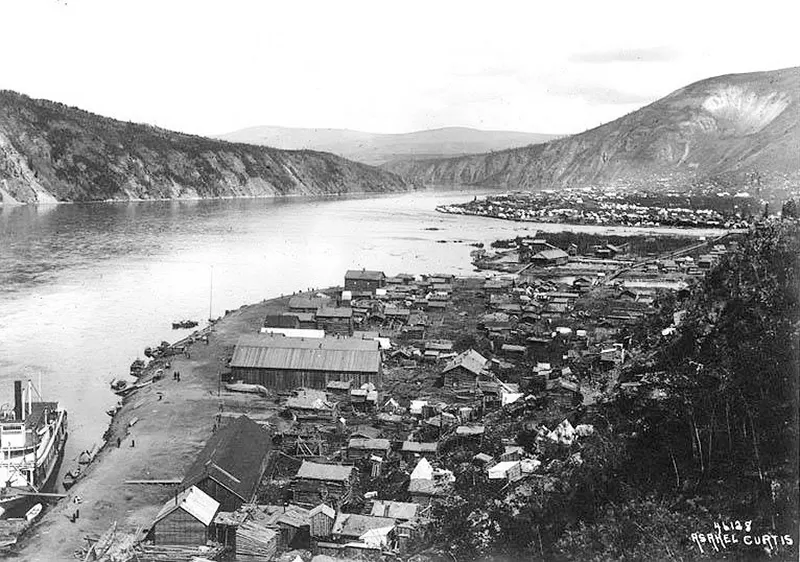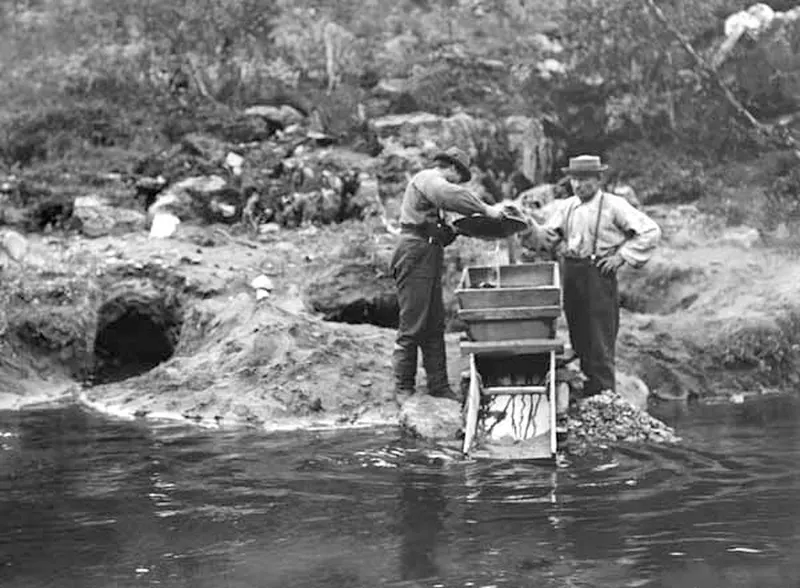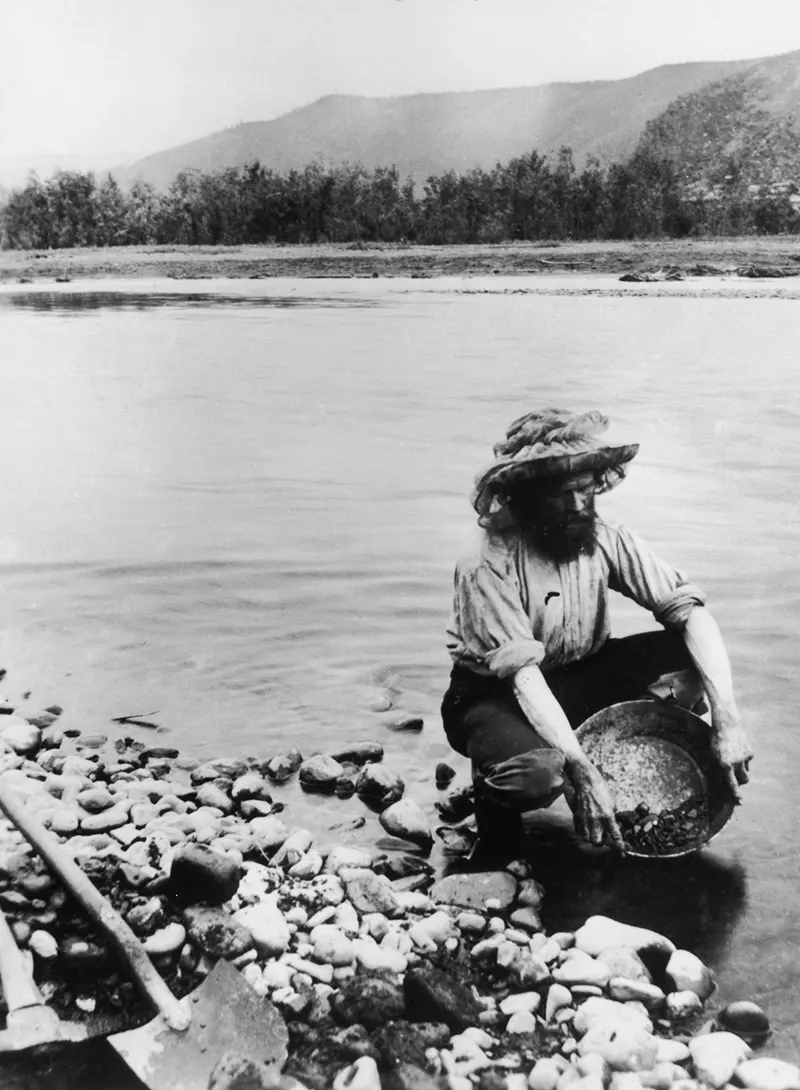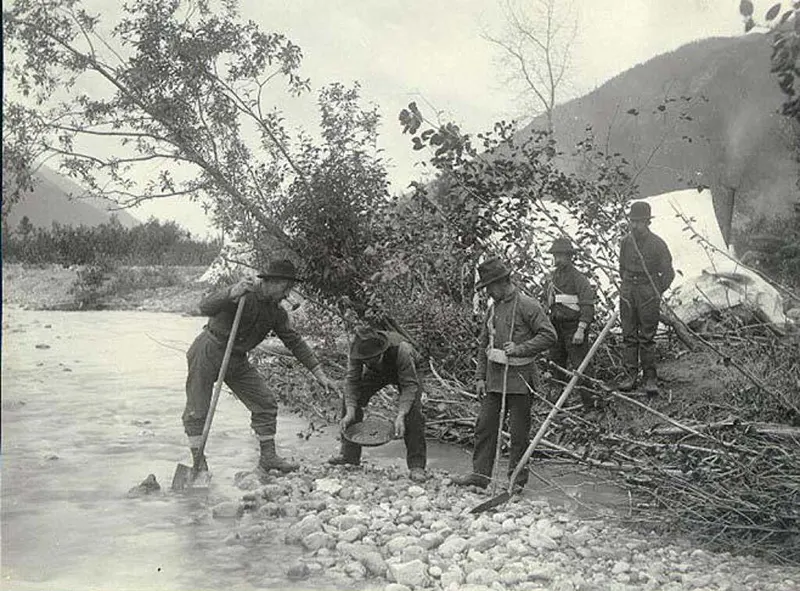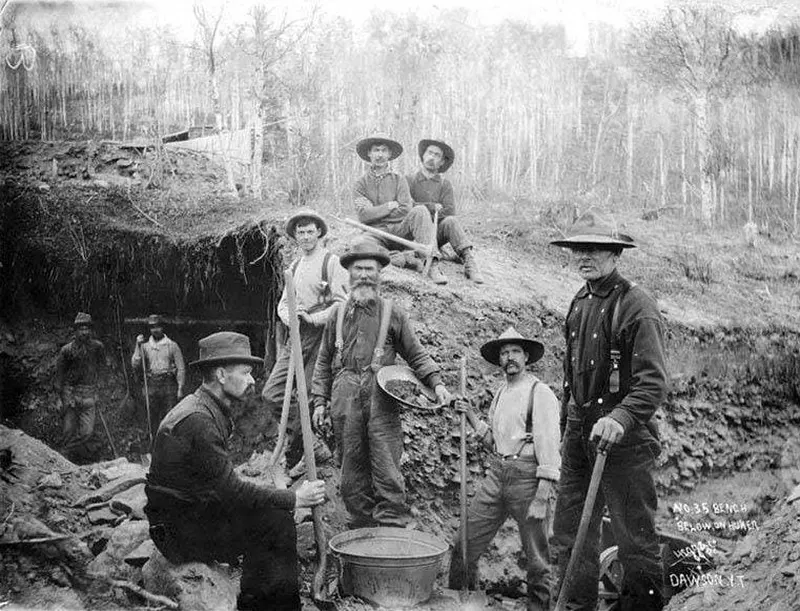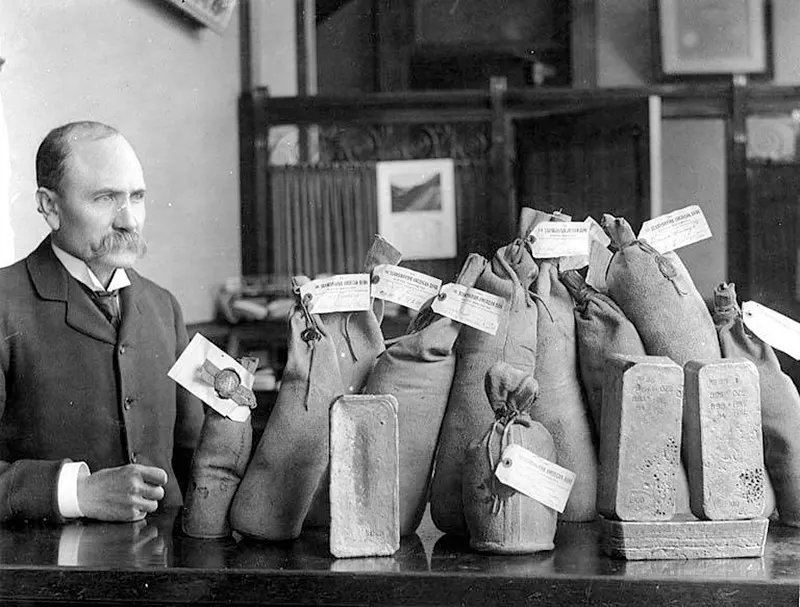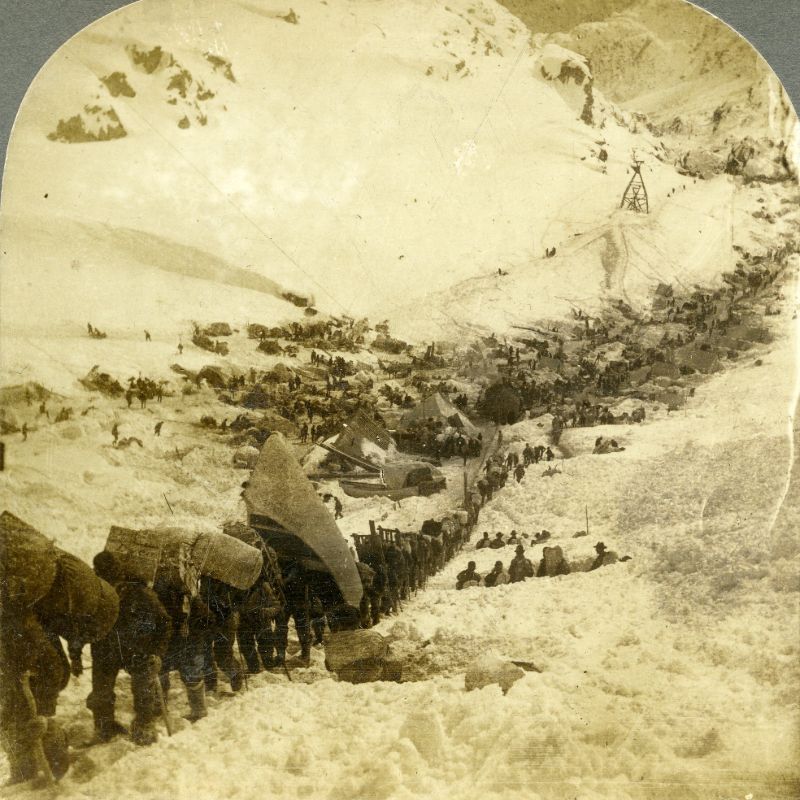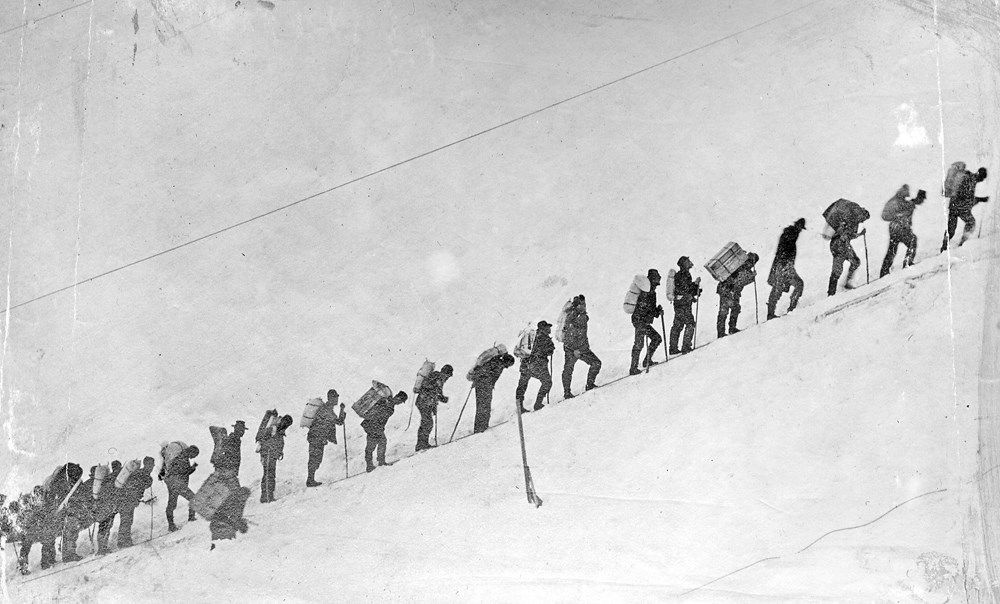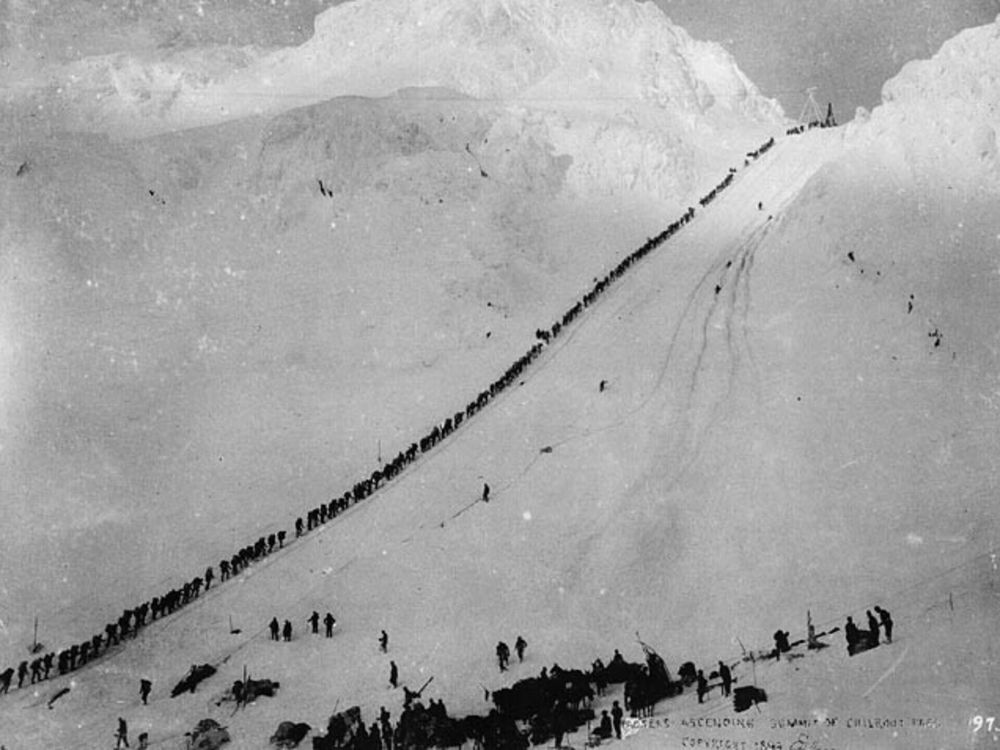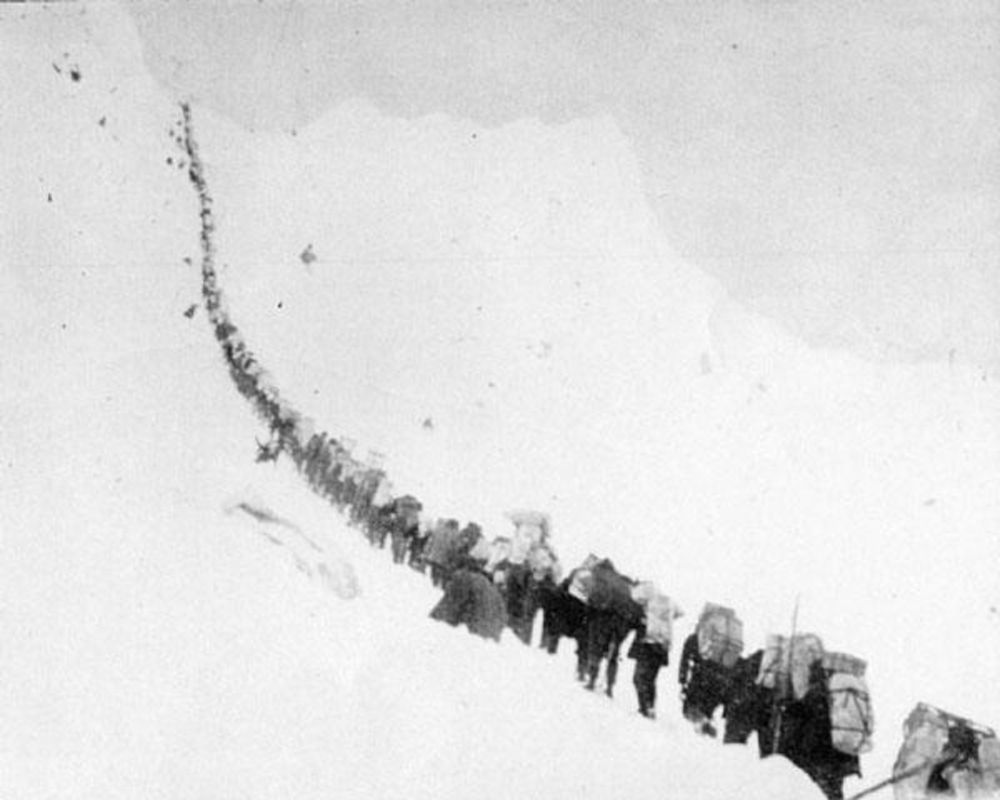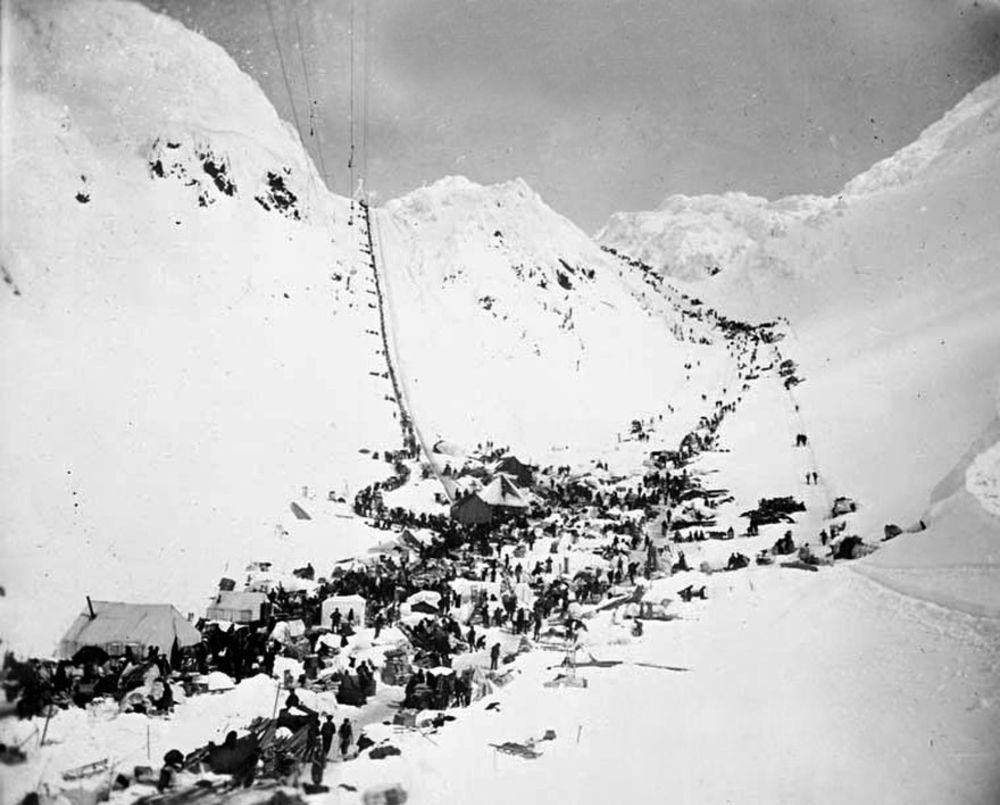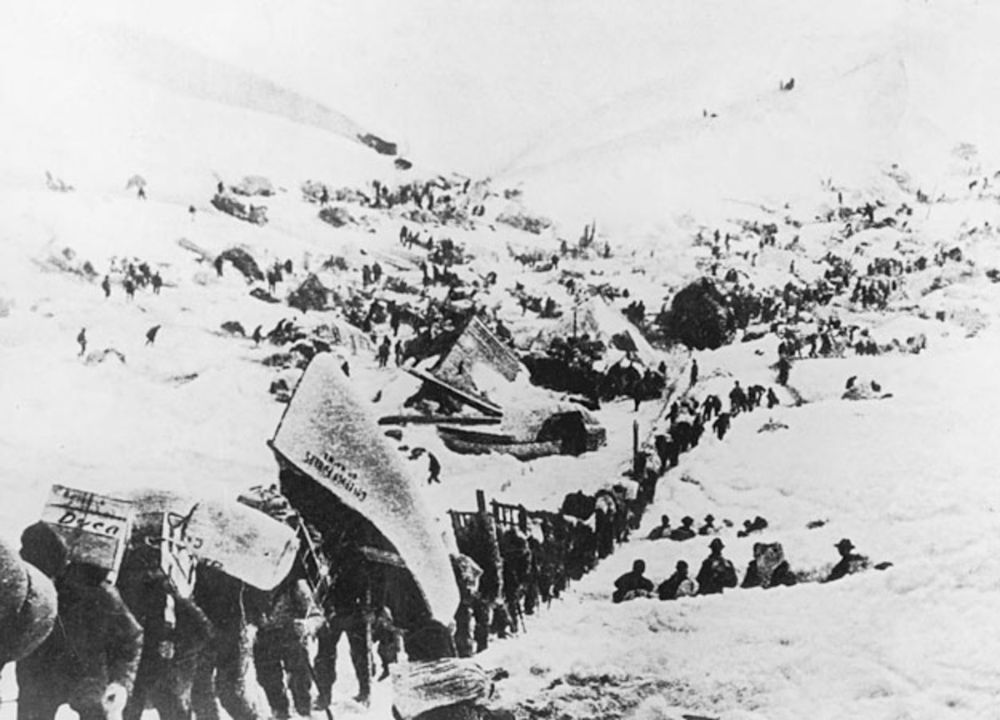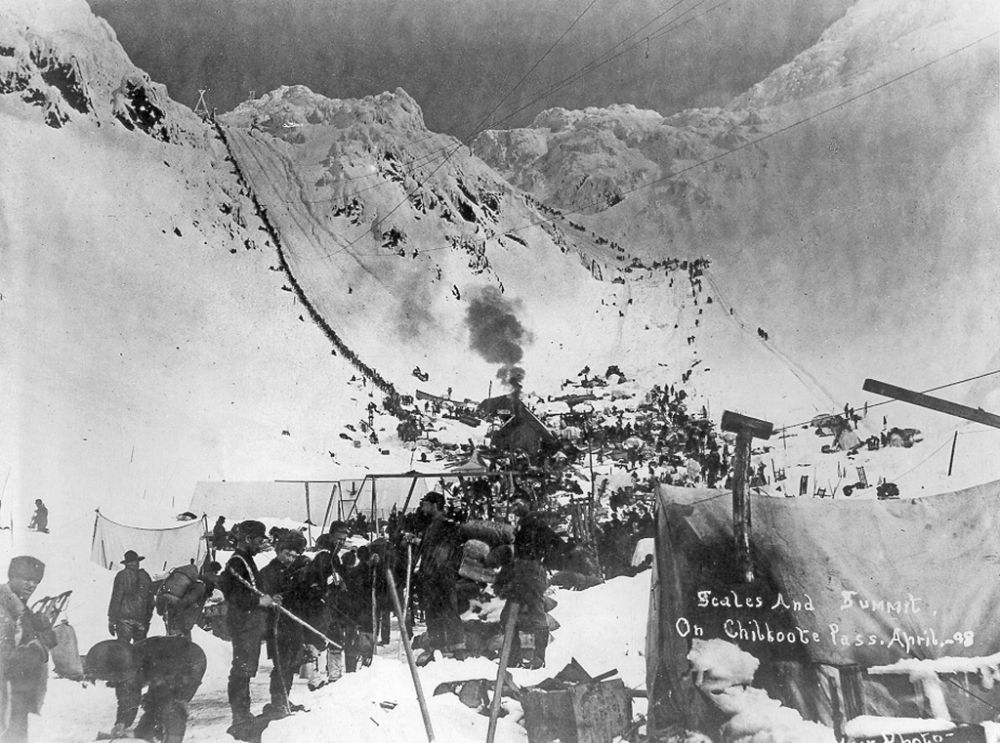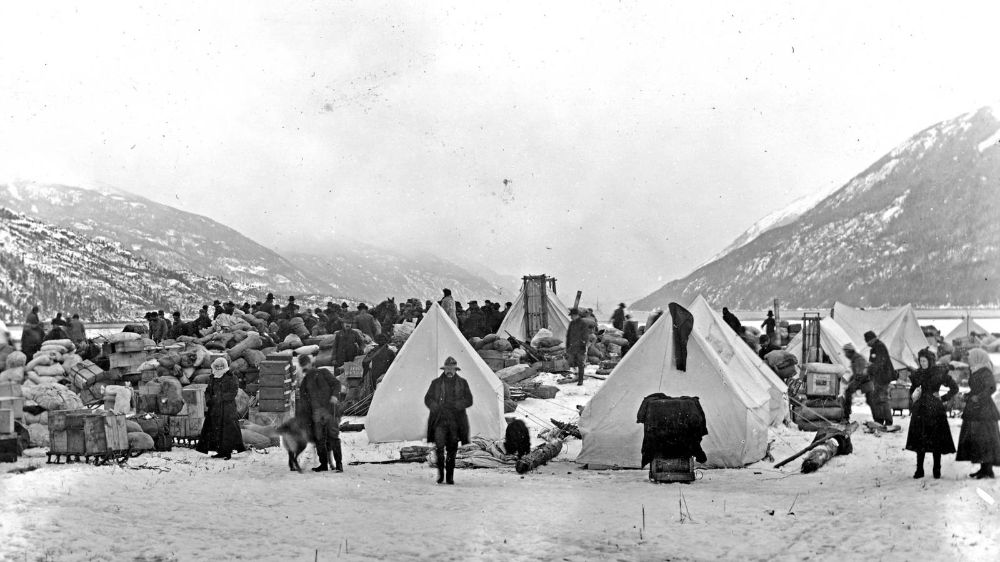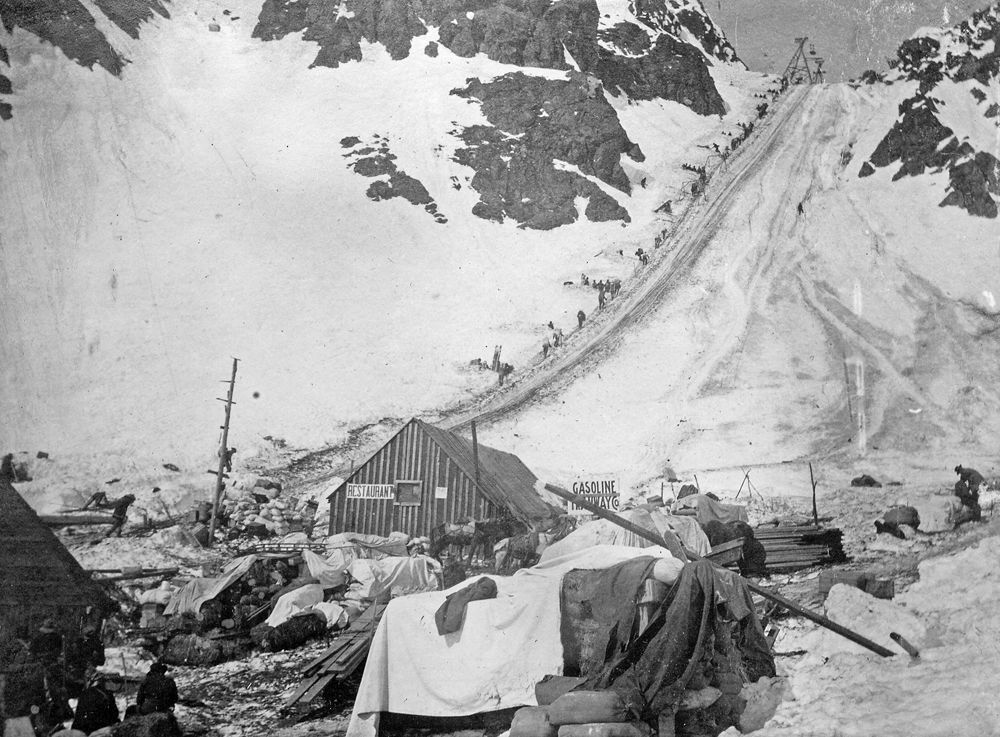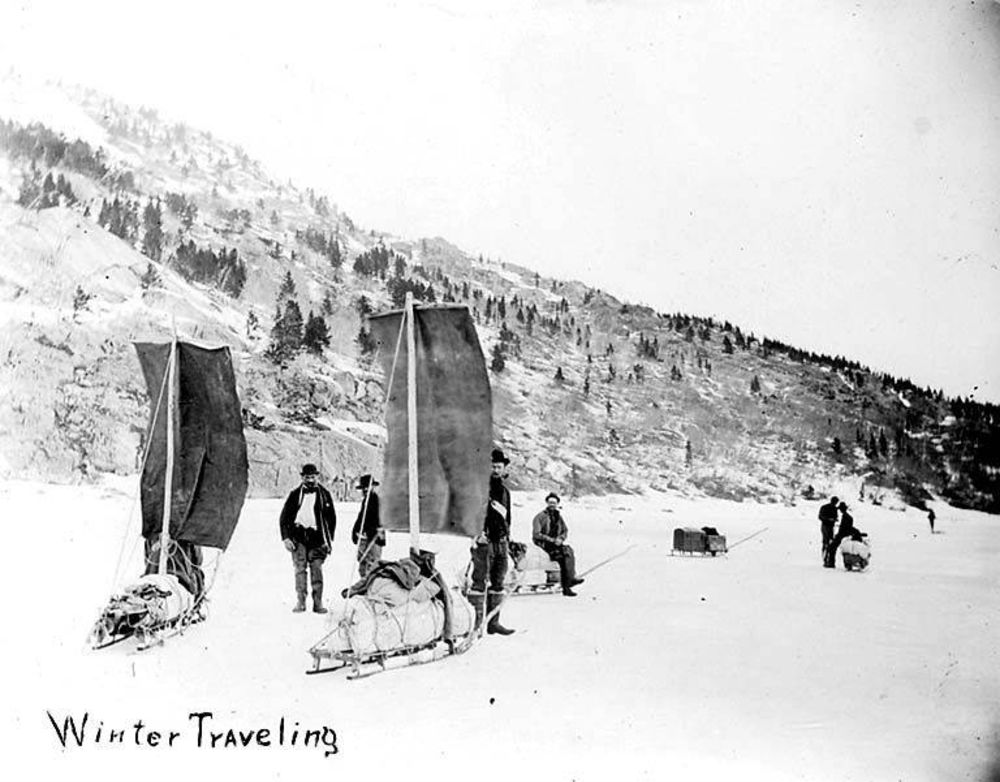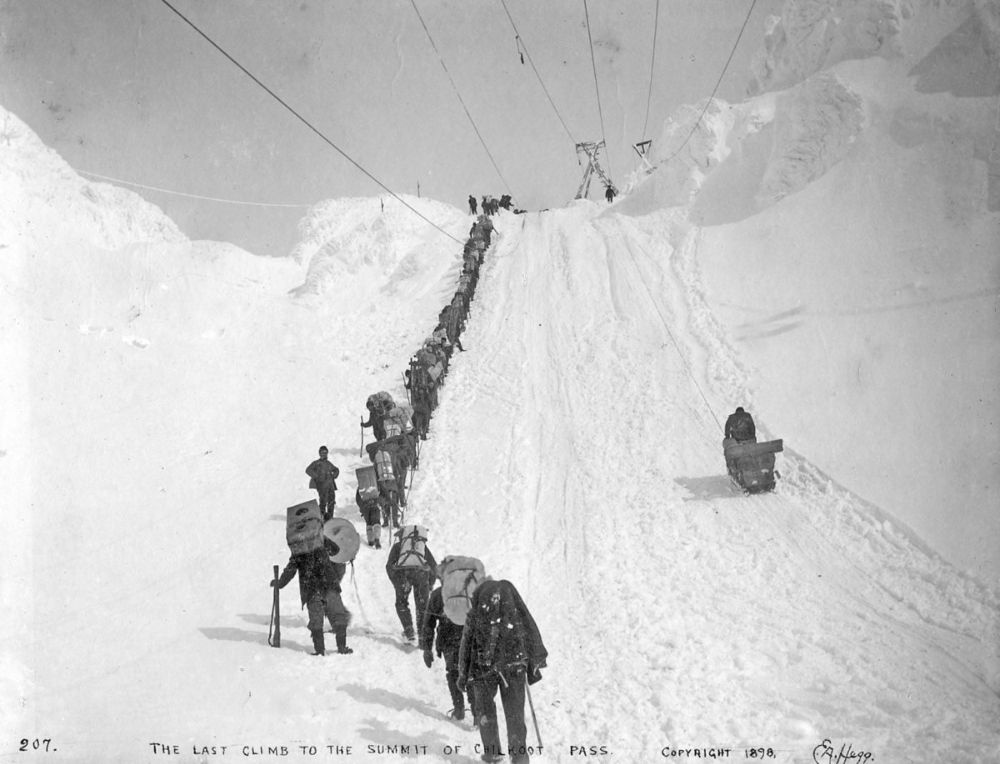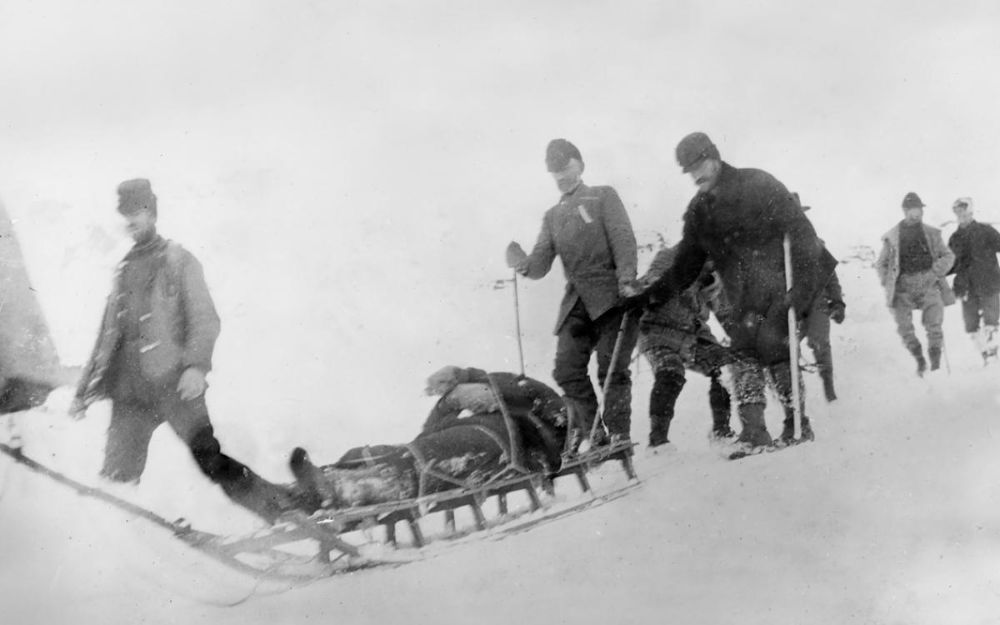The idea of striking it rich led over 100,000 people from all walks of life to abandon their homes and embark on an extended, life-threatening journey across treacherous, icy valleys and harrowing rocky terrain. Most of these stampeders did not get rich, but a good number decided to stay in Alaska and Yukon afterwards, quickly transforming its population. Between 1897 and 1907 prospectors founded more than fifty gold-mining camps in various parts of Alaska, some of which, such as Nome and Fairbanks, grew into major towns. On August 16, 1896, an American prospector named George Carmack, his Tagish wife Kate Carmack, her brother Skookum Jim, and their nephew Dawson Charlie were traveling south of the Klondike River and began looking for gold on Bonanza Creek. It is not clear who discovered the gold: George Carmack or Skookum Jim, but the group agreed to let George Carmack appear as the official discoverer because they feared that authorities would not recognize an indigenous claimant. In any event, gold was present along the river in huge quantities. Carmack measured out four claims, strips of ground that could later be legally mined by the owner, along the river; these including two for himself—one as his normal claim, the second as a reward for having discovered the gold—and one each for Jim and Charlie. The claims were registered the next day at the police post at the mouth of the Fortymile River and news spread rapidly from there to other mining camps in the Yukon River valley. By the end of August, all of Bonanza Creek had been claimed by miners. A prospector then advanced up into one of the creeks feeding into Bonanza, later to be named Eldorado Creek. He discovered new sources of gold there, which would prove to be even richer than those on Bonanza. In the resulting Klondike stampede, an estimated 100,000 people tried to reach the Klondike goldfields, of whom only around 30,000 to 40,000 eventually did. It formed the height of the Klondike gold rush from the summer of 1897 until the summer of 1898. It began on July 15, 1897, in San Francisco and was spurred further two days later in Seattle, when the first of the early prospectors returned from the Klondike, bringing with them large amounts of gold on the ships Excelsior and Portland. The press reported that a total of $1,139,000 (equivalent to $1 billion at 2010 prices) had been brought in by these ships, although this proved to be an underestimate. The migration of prospectors caught so much attention that it was joined by outfitters, writers, and photographers. To reach the gold fields, most prospectors took the route through the ports of Dyea and Skagway, in Southeast Alaska. Here, the “Klondikers” could follow either the Chilkoot or the White Pass trails to the Yukon River, and sail down to the Klondike. The Canadian authorities required each of them to bring a year’s supply of food, in order to prevent starvation. In all, the Klondikers’ equipment weighed close to a ton, which most carried themselves, in stages. Performing this task, and contending with the mountainous terrain and cold climate, meant those who persisted did not arrive until the summer of 1898. Once there, they found few opportunities, and many left disappointed. To accommodate the prospectors, boom towns sprang up along the routes. At their terminus, Dawson City was founded at the confluence of the Klondike and Yukon rivers. From a population of 500 in 1896, the town grew to house approximately 30,000 people by summer 1898. Built of wood, isolated, and unsanitary, Dawson suffered from fires, high prices, and epidemics. Despite this, the wealthiest prospectors spent extravagantly, gambling and drinking in the saloons. The indigenous Hän, on the other hand, suffered from the rush; they were forcibly moved into a reserve to make way for the Klondikers, and many died. Of the estimated 30,000 to 40,000 people who reached Dawson City during the gold rush, only around 15,000 to 20,000 finally became prospectors. Of these, no more than 4,000 struck gold and only a few hundred became rich. By the time most of the stampeders arrived in 1898, the best creeks had all been claimed, either by the long-term miners in the region or by the first arrivals of the year before. The Bonanza, Eldorado, Hunker and Dominion Creeks were all taken, with almost 10,000 claims recorded by the authorities by July 1898; a new prospector would have to look further afield to find a claim of his own. Mining began with clearing the ground of vegetation and debris. Prospect holes were then dug in an attempt to find the ore or “pay streak”. If these holes looked productive, proper digging could commence, aiming down to the bedrock, where the majority of the gold was found. The digging would be carefully monitored in case the operation needed to be shifted to allow for changes in the flow. In the sub-Arctic climate of the Klondike, a layer of hard permafrost lay only 6 feet (1.8 m) below the surface. Traditionally, this had meant that mining in the region only occurred during the summer months, but the pressure of the gold rush made such a delay unacceptable. Late 19th century technology existed for dealing with this problem, including hydraulic mining and stripping, and dredging, but the heavy equipment required for this could not be brought into the Klondike during the gold rush. Instead, the miners relied on wood fires to soften the ground to a depth of about 14 inches and then removing the resulting gravel. The process was repeated until the gold was reached. In theory, no support of the shaft was necessary because of the permafrost although in practice sometimes the fire melted the permafrost and caused collapses. Fires could also produce noxious gasses, which had to be removed by bellows or other tools. The resulting “dirt” brought out of the mines froze quickly in winter and could be processed only during the warmer summer months. An alternative, more efficient, approach called steam thawing was devised between 1897 and 1898; this used a furnace to pump steam directly into the ground, but since it required additional equipment it was not a widespread technique during the years of the rush. In the summer, water would be used to sluice and pan the dirt, separating out the heavier gold from gravel. This required miners to construct sluices, which were sequences of wooden boxes 15 feet (4.6 m) long, through which the dirt would be washed; up to 20 of these might be needed for each mining operation. The sluices in turn required much water, usually produced by creating a dam and ditches or crude pipes. “Bench gold” mining on the hill sides could not use sluice lines because water could not be pumped that high up. Instead, these mines used rockers, boxes that moved back and forth like a cradle, to create the motion needed for separation. Finally, the resulting gold dust could be exported out of the Klondike; exchanged for paper money at the rate of $16 ($430) per troy ounce through one of the major banks that opened in Dawson City, or simply used as money when dealing with local traders Beginning in 1898, the newspapers that had encouraged so many to travel to the Klondike lost interest in it. In the summer of 1899, gold was discovered around Nome in west Alaska, and many prospectors left the Klondike for the new goldfields, marking the end of the Klondike Rush. The boom towns declined, and the population of Dawson City fell. Gold mining production in the Klondike peaked in 1903 after heavier equipment was brought in. Since then, the Klondike has been mined on and off, and today the legacy draws tourists to the region and contributes to its prosperity.
(Photo credit: Wikimedia Commons). Notify me of new posts by email.
Δ Subscribe








